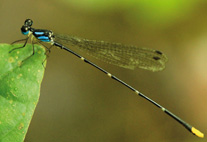Abstract
Recent molecular work on milk sharks (Rhizoprionodon acutus [Rüppell]) suggests that, rather than a single widely distributed species, R. acutus represents a complex of four narrowly distributed cryptic species. Examination of the cestodes in three of the four members of that complex globally led to the discovery and description of three new species in the onchoproteocephalidean genus Phoreiobothrium Linton, 1889. The host associations and geographic distributions of the new species are fully congruent with the geographic distributions and species boundaries inferred for the sharks from molecular data: Phoreiobothrium jahki n. sp. parasitizes Rhizoprionodon cf. acutus 3 off Borneo, P. nadiae n. sp. parasitizes R. cf. acutus 1 off Senegal, and P. swaki n. sp. parasitizes R. cf. acutus 2 off northern Australia. The new cestodes differ from one another and from their 11 valid congeners in morphological features such as sublocular configuration and number, hook size, and testis number. Given the notoriously oioxenous nature of elasmobranch-hosted onchoproteocephalidean cestodes, these results provide further support for recognition of the milk shark species complex. This work also raises questions about the Phoreiobothrium species reported in cursory descriptions from India; further examination of these cestodes is key because they are potentially hosted by the fourth member of the R. acutus complex. To encourage future taxonomic work on the morphology of sharks in this complex, comparative photographs of representatives of the four potential host species are provided.

